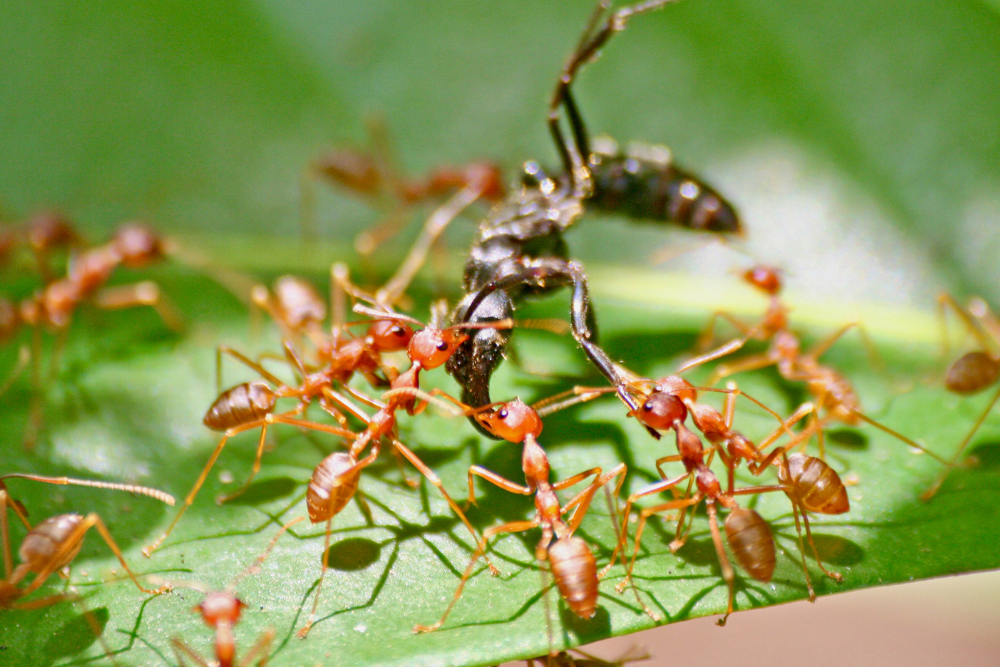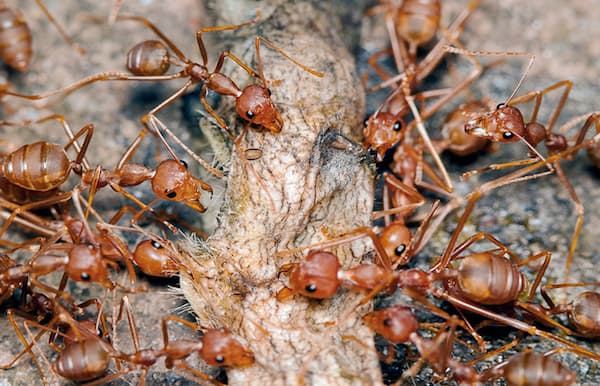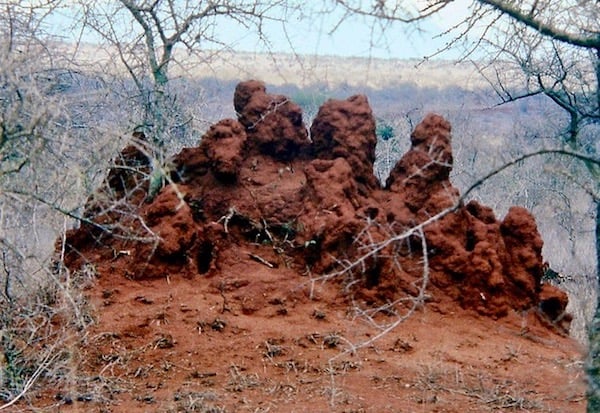CAMEROON
Jaglavak: Battle of the Bugs
By Chadd McGlone
Chapel Hill, NC, United States
Among the inhospitable mountains of northern Cameroon live the Mofu people. Calling themselves “People of the Rock,” their primary pursuit is harmony with nature. You may have friends who like to take walks on the weekends or plant petunias by their patios, but have you ever known someone who befriended a beetle? The Mofu have a unique way of interacting with their environment — they connect with insects.
That’s right. Not only do the Mofu eat their six-legged neighbors as a source of protein, but they also keep insects as pets. Human supremacy isn’t always the rule, however, because during droughts, one species of insect, namely termites, turns on their Mofu cohabitants.
Home Invasion
Much like elsewhere in the world, termites attack the structures Mofu build to shelter their families. Consistent with their cultural values, Mofu homes reflect their connection to nature, as they are constructed entirely from locally sourced, sustainable materials. The Mofu form the walls of their houses from clay packed onto lattice frames of entwined sticks. Roofs consist of dried grass woven in a pattern that repels rain.
Unfortunately for the Mofu, termites can’t resist those delicious thatched roofs. Wandering over from a nest in the area, a termite will burrow through the clay sides of the house in pursuit of a juicy snack. In short order, the thatched roof has become a termite banquet.
Time for Jaglavak
Once a family is certain that termites have invaded their home, their only solution is to call for jaglavak. Who or what is a jaglavak? To the Mofu, jaglavak is the warrior prince who saves their homes. To us, it is a collection of army ants.
African Army Ants
African army ants are the largest ants on the planet and live in colonies of up to 20 million individuals. Because of their enormous populations, they are constantly on the move looking for food sources. Those tiny beetles, spiders, worms and other invertebrates that emerge when you stir up a pile of dead leaves? They are army ant prey.

Photo credit: Axel Rouvin via Flickr
A trail of foraging army ants can be as wide as 20 meters and as long as 100 meters. They are known as the great cleaners of the forest, because they consume every bit of prey in their path. Estimates of how many meals they eat in one day range from 30,000 to 100,000.
To the Rescue
You can see why a family besieged by termites might turn to these fierce fighters for help. The first step is to ask the village chief to fetch jaglavak. The chief searches out an army ant colony, collects several hundred in a clay pot, blesses them and releases them at the infested house.
Battling Bugs
A savage battle ensues between the ants and the termites. Despite the superior size of the termites, the ants’ aggressive swarming overpowers them. Jaglavak have been known to eat frogs, birds and snakes, so termites are easily defeated.
Within two or three weeks, the army ants have completely consumed the offending termites. They then head back out into the forest to find their queen and wage war within the leaf litter, leaving behind a happy homeowner.
Have a suggestion for this story? We’d love for you to submit it!


Blank
Blank
Slideshows
Are you a teacher who’s interested in telling this story to your students? Here are two slideshows to get you started!
Math Resources
Learning Activities:
- Exponential Growth (Middle School)
- Working with Large Numbers (Middle School)
- Exponential Growth (Grades 8–10)
Sample Problems:
- In Cameroon, there are about 15,000 army ant colonies. Use scientific notation to write how many individual ants can be found in the entire country?
- A single ant has an area of five square millimeters. How much area does an entire colony trail take up?
- It takes 15 ants to kill one termite. If a home contains a termite colony with 15,000 termites, how many ants does the chief need to release to get rid of the infestation?
- Termite colony populations grow exponentially. The chief will get jaglavak if someone sees 150 termites. If a homeowner counts four termites one day, 11 two days later, and 25 four days later, when does the chief need to get jaglavak? Change the numbers to explore this pattern more deeply.
- If a chief captures 100,000 ants, how many ants are left in a colony of 20 million? What percentage of the colony is the chief taking?
- If the weight of a worker ant is between 1.5 and 9.6 milligrams, what is the lowest possible weight of the 100,000 ants the chief captures? What would be the heaviest they could weigh?
- A colony of 200,000 ants travels at a rate of 20 meters per hour. Convert this rate to miles per hour.
Social Justice Question
What do you think about the way Western countries such as the United States use chemicals to kill termites? What are the benefits and disadvantages, in your opinion? Should this pest-control technology be used to help the Mofu protect their houses?
Extension Question
To control the local mosquito population, an agency in the Florida Keys has released genetically modified mosquitoes that prevent female offspring from maturing. Read this news account and then compare the Florida program with the Mofu’s termite control strategy. What are the strengths and weaknesses of each?
Explore Further
- PBS story on the Mofu and jaglavak
- Part 1 of a documentary on jaglavak
- Army ant fun facts
- Video of an ant-termite “truce”
- Podcast about an army ant problem in Kenya
- Research on the math of termite mounds
Share Your Story
Write your own Global Math Story and send it to us!
Sorry, the comment form is closed at this time.